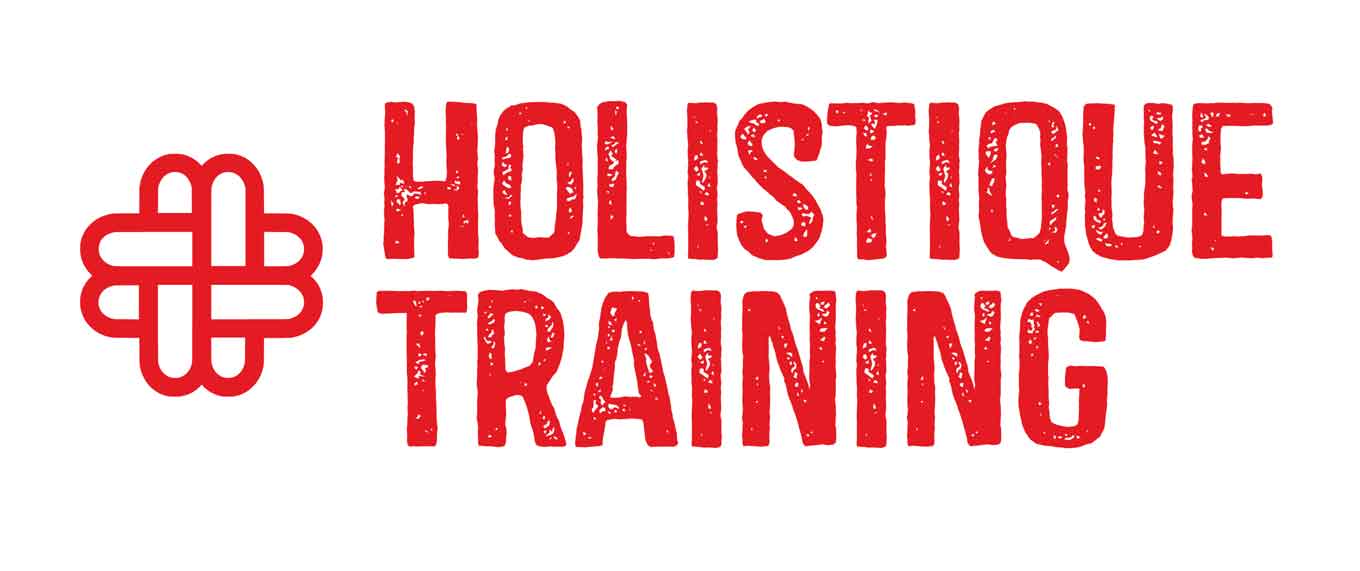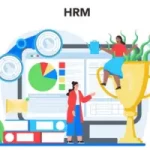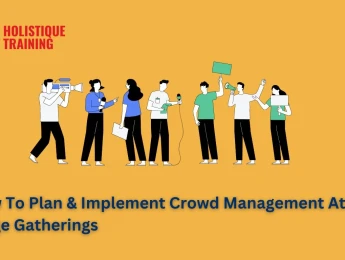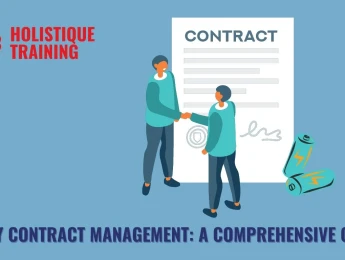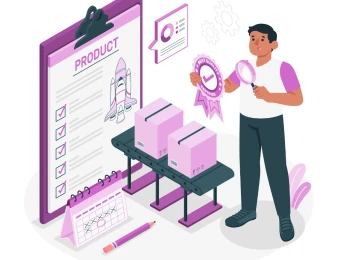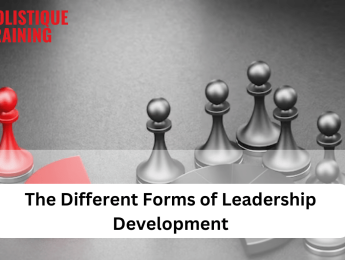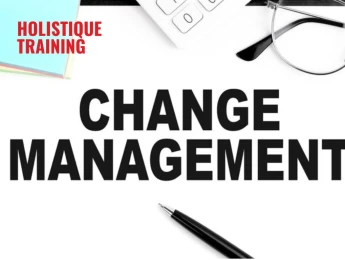- Table of Contents
- Introduction
- What Does a Skills Gap Mean?
- What Is a Skills Gap Analysis?
- Why Is a Skills Gap Analysis Useful?
- Facilitates Change Management
- Enhances Talent Development
- Supports Strategic Planning
- Improves Competitiveness
- Promotes Innovation
- Enhances Operational Efficiency
- Boosts Employee Engagement
- Facilitates Succession Planning
- How to Conduct a Skills Gap Analysis
- 1. Define Organizational Goals
- 2. Identify Key Roles and Skills
- 3. Assess Current Skills
- 4. Identify Gaps
- 5. Prioritize Skills Development
- 6. Develop Training Programs
- 7. Implement and Monitor
- 8. Review and Adjust
- Additional Considerations
- Skills Gap Analysis Example (Template)
- 1. Organizational Goals
- 2. Key Roles and Skills Needed
- 3. Current Skills Assessment
- 4. Identified Gaps
- 5. Prioritized Skills Development
- 6. Develop Training Programs
- 7. Implementation and Monitoring
- 8. Review and Adjust
- Conclusion
Introduction
Every organization, at some point, confronts the challenge of aligning its workforce's skills with its strategic goals. This alignment is crucial for maintaining competitiveness, fostering innovation, and ensuring sustainable growth. This blog post delves into the concept of skills gap analysis—a systematic approach to identifying and addressing discrepancies between existing skills and those required to meet organizational objectives. By understanding what a skills gap is, why analyzing these gaps is beneficial, and how to conduct such an analysis effectively, businesses can position themselves for success in an ever-evolving marketplace.
What Does a Skills Gap Mean?
A skills gap refers to the difference between the skills that employers need from their workforce and the skills that their employees currently possess. This gap can manifest in various forms, such as a lack of technical expertise, inadequate soft skills, or insufficient leadership capabilities. It can arise due to technological advancements, changes in industry standards, or shifts in business strategies. According to the Association for Talent Development, 74% of organizations experience skills gaps. Recognizing and addressing these gaps is essential for organizations to remain agile and responsive to market demands. The skills gap is not just a challenge for individual companies but a broader economic issue. It affects productivity, innovation, and economic growth. As industries evolve, the demand for new skills increases, creating pressure on educational institutions and training programs to adapt quickly. For employees, a skills gap can lead to job insecurity, limited career advancement, and reduced job satisfaction.
What Is a Skills Gap Analysis?
Skills gap analysis is a strategic tool used by organizations to assess the disparity between the current capabilities of their workforce and the skills needed to achieve future objectives. This analysis involves evaluating the existing skill set of employees, identifying areas lacking proficiency, and developing strategies to bridge these gaps. It is a proactive approach that helps organizations anticipate future needs and prepare their workforce accordingly.
Conducting a skills gap analysis involves several steps, including defining the skills required for specific roles, assessing the current skill levels of employees, and identifying gaps. The process is not just about identifying deficiencies but also about recognizing strengths and opportunities for growth. By understanding where gaps exist, organizations can tailor training and development programs to address specific needs, ensuring that their workforce is equipped to handle emerging challenges.
Aspect | Then | Now |
Assessment Method | Informal observations and annual reviews | Data-driven analytics and continuous feedback |
Training Delivery | In-person workshops and seminars | Online courses and blended learning |
Focus Area | General skill development | Targeted skill enhancement based on specific needs |
Technology Utilization | Limited use of technology in training | Integration of AI, VR, and digital platforms |
Employee Involvement | Top-down approach with little employee input | Collaborative approach with employee input and self-assessment |
Why Is a Skills Gap Analysis Useful?
A skills gap analysis is a valuable tool for change management, talent development, and strategic planning. Here are some reasons why it is essential:
Facilitates Change Management
Change is a constant in the business world, driven by technological advancements, market shifts, and evolving consumer demands. Organizations must be agile to adapt to these changes effectively. Skills gap analysis plays a crucial role in change management by providing insights into the skills required to navigate new landscapes. For instance, when a company undergoes a digital transformation, it needs employees who are proficient in new technologies and processes. By identifying the skills gaps early, organizations can implement targeted training programs that prepare employees to embrace change confidently. This proactive approach minimizes resistance, enhances employee engagement, and ensures a smoother transition during periods of transformation.
Enhances Talent Development
Talent development is essential for maintaining a motivated and competent workforce. Skills gap analysis provides a structured framework for identifying areas where employees can improve and grow. By pinpointing specific skills that need enhancement, organizations can tailor their training and development initiatives to address these needs. According to Deloitte, 84% of companies recognize “the importance of continual reinvention through lifelong learning in their development strategies.” This targeted approach not only boosts individual performance but also contributes to overall organizational success. Employees who receive relevant training feel valued and empowered, leading to increased job satisfaction and retention. Moreover, a focus on continuous learning fosters a culture of growth, encouraging employees to take ownership of their development and pursue lifelong learning, despite only 16% expecting to significantly increase reskilling investment over the next three years.
Supports Strategic Planning
Strategic planning involves setting long-term goals and defining the path to achieve them. Skills gap analysis is integral to this process, as it ensures that the workforce is equipped to meet future demands. By understanding the current skills landscape, leaders can make informed decisions about resource allocation, project prioritization, and investment in training programs. This alignment between skills and strategic objectives enables organizations to capitalize on opportunities, mitigate risks, and drive sustainable growth. Furthermore, skills gap analysis helps anticipate future skills needs, allowing companies to proactively develop capabilities that will be crucial for achieving strategic goals.
Improves Competitiveness
In a rapidly changing market, having a skilled workforce is a significant competitive advantage. Skills gap analysis ensures that organizations are not only meeting current demands but are also prepared for future challenges. By identifying and addressing skills gaps, companies can maintain high levels of productivity, innovation, and customer satisfaction. A well-equipped workforce can respond more effectively to market trends, deliver superior products and services, and differentiate the organization from competitors. This competitive edge is vital for attracting new customers, retaining existing ones, and achieving long-term success.
Promotes Innovation
Innovation is the lifeblood of growth and success. Skills gap analysis encourages innovation by identifying gaps in skills that may hinder creative problem-solving and idea generation. Employees equipped with the right skills are more likely to contribute to innovative solutions and drive the development of new products and services. For example, if a company identifies a gap in data analytics skills, it can provide training that enables employees to leverage data insights for strategic decision-making and innovation. By fostering a culture of innovation, organizations can stay ahead of industry trends, adapt to changing customer needs, and continuously improve their offerings.
Enhances Operational Efficiency
Operational efficiency is critical for maximizing productivity and minimizing costs. Skills gap analysis helps identify areas where inefficiencies may exist due to skill deficiencies. By addressing these gaps, organizations can streamline processes, reduce errors, and improve overall performance. For instance, if employees lack proficiency in certain software tools, it can lead to delays and inaccuracies in work. Targeted training can enhance their skills, leading to faster and more accurate execution of tasks. Improved efficiency not only boosts the bottom line but also enhances employee morale, as individuals are empowered to perform their roles effectively.
Boosts Employee Engagement
Employee engagement is a key driver of organizational success. Engaged employees are more productive, committed, and aligned with company goals. Skills gap analysis contributes to engagement by demonstrating an organization's commitment to employee development. When employees see that their employer invests in their growth, they feel valued and motivated to contribute to the organization's success. Additionally, skills gap analysis provides employees with clear career pathways, enabling them to set personal development goals and pursue opportunities for advancement. This sense of purpose and direction enhances engagement and fosters a positive workplace culture.
Facilitates Succession Planning
Succession planning is essential for ensuring leadership continuity and organizational stability. Skills gap analysis aids in identifying potential leaders within the organization and assessing their readiness for future roles. By understanding the skills required for leadership positions, organizations can develop targeted training programs that prepare individuals for advancement. This proactive approach minimizes the risk of leadership gaps and ensures a smooth transition when key positions need to be filled. Effective succession planning also contributes to employee retention, as individuals are more likely to stay with an organization that offers clear pathways for career progression.
In summary, skills gap analysis is a multifaceted tool that offers numerous benefits to organizations. By facilitating change management, enhancing talent development, supporting strategic planning, improving competitiveness, promoting innovation, enhancing operational efficiency, boosting employee engagement, and facilitating succession planning, skills gap analysis empowers organizations to thrive in a dynamic business environment. Investing in this process is not just about addressing current needs; it is about preparing for the future and ensuring long-term success.
How to Conduct a Skills Gap Analysis
Conducting a skills gap analysis involves a systematic approach that includes the following steps:
1. Define Organizational Goals
The first step in conducting a skills gap analysis is to clearly define the strategic objectives of the organization. Understanding these goals is crucial because they serve as the foundation for identifying the skills needed. Whether the aim is to increase market share, expand into new territories, or innovate product offerings, the skills required will vary. This step involves collaboration with key stakeholders, including executives and department heads, to ensure alignment between business strategies and workforce capabilities. By establishing clear goals, organizations can focus their skills gap analysis on areas that will have the most significant impact.
2. Identify Key Roles and Skills
Once organizational goals are defined, the next step is to identify the critical roles within the organization that will drive these objectives. This involves analyzing job descriptions, industry standards, and future trends to determine the skills required for each role. It’s important to consider both technical skills and soft skills, such as leadership, communication, and problem-solving. Additionally, organizations should anticipate future needs by considering emerging technologies and market developments. This forward-thinking approach ensures that the skills gap analysis is not only addressing current deficiencies but also preparing for future challenges.
3. Assess Current Skills
The assessment of current skills involves gathering data on the existing capabilities of employees. This can be achieved through various methods, including surveys, interviews, performance reviews, and skills assessments. Surveys and interviews provide qualitative insights into employee perceptions of their skills and development needs, while performance reviews offer quantitative data on job performance. Skills assessments, such as tests or practical evaluations, provide objective measures of proficiency. This comprehensive approach ensures a thorough understanding of the current skills landscape, highlighting both strengths and areas for improvement.
4. Identify Gaps
With a clear picture of current skills, the next step is to identify gaps by comparing them with the required skills. This analysis should highlight deficiencies at both individual and organizational levels. It’s important to consider the impact of these gaps on achieving strategic goals and prioritize those that pose the greatest risk or offer the greatest opportunity for improvement. This process involves collaboration between HR professionals, department managers, and employees to ensure a holistic understanding of gaps and their implications.
5. Prioritize Skills Development
Based on the identified gaps, organizations should prioritize skills development initiatives. This involves focusing on areas that are critical to achieving organizational goals and that offer the greatest potential for impact. Prioritization should consider factors such as the urgency of the need, the availability of resources, and the potential return on investment. By concentrating efforts on high-impact areas, organizations can maximize the effectiveness of their skills development programs.
6. Develop Training Programs
Developing training programs tailored to address specific gaps is a crucial step in the skills gap analysis process. These programs should be aligned with organizational objectives and should leverage various learning methods to accommodate different learning styles. Options include workshops, e-learning modules, mentorship programs, and on-the-job training. It’s essential to incorporate practical elements that allow employees to apply new skills in real-world scenarios. Additionally, training programs should be flexible and adaptable to changing needs, ensuring continuous learning and development.
7. Implement and Monitor
Implementation involves rolling out the training programs and ensuring that they are accessible and engaging for employees. Organizations should communicate the importance of these initiatives and encourage participation. Monitoring the effectiveness of training programs is crucial for ensuring continuous improvement. This involves tracking progress through regular assessments, feedback sessions, and performance metrics. By evaluating the impact of training on skills development and organizational performance, companies can make informed decisions about adjustments and enhancements.
Metric | Description |
Training Completion Rate | Percentage of employees who complete the training programs designed to address skill gaps |
Skill Improvement Scores | Assessment scores before and after training to evaluate the improvement in targeted skills |
Employee Satisfaction | Surveys measuring employee satisfaction with training and development initiatives |
Performance Metrics | Changes in productivity, efficiency, or quality of work after addressing skill gaps |
Retention Rates | Tracking employee retention rates to see if targeted training impacts turnover |
Table: Metrics to measure the effectiveness of a Skills Gap Analysis
8. Review and Adjust
Skills gap analysis is an ongoing process that requires regular review and adjustment. As organizational goals evolve and market conditions change, the skills required will also shift. Regularly reviewing the analysis ensures that the organization remains aligned with its strategic objectives and is prepared for future challenges. This involves revisiting each step of the process, from defining goals to assessing skills and identifying gaps. By maintaining flexibility and adaptability, organizations can ensure that their workforce is equipped to handle emerging demands.
Additional Considerations
- Engage Employees: Involve employees in the skills gap analysis process to gain valuable insights and foster a sense of ownership over their development. Encourage open communication and feedback to ensure that training programs meet their needs and expectations.
- Leverage Technology: Utilize technology to streamline the skills gap analysis process. Tools such as learning management systems, analytics platforms, and assessment software can enhance data collection, analysis, and training delivery.
- Collaborate with External Partners: Consider collaborating with external training providers, industry experts, and educational institutions to access specialized knowledge and resources. This can enhance the quality and effectiveness of training programs.
- Align with Organizational Culture: Ensure that skills gap analysis and training initiatives align with the organizational culture and values. This promotes engagement and ensures that development efforts are consistent with the company’s mission and vision.
By following these steps and considerations, organizations can conduct a comprehensive skills gap analysis that positions them for success in a dynamic business environment. Investing in this process not only addresses current skills deficiencies but also prepares the workforce for future challenges, driving sustainable growth and competitive advantage.
Skills Gap Analysis Example (Template)
To effectively illustrate how a skills gap analysis can be conducted, let's consider a hypothetical company, "Tech Innovations Corp," which aims to increase its market share by 20% within the next two years. This strategic objective requires a thorough understanding of the skills needed across key roles within the organization. Here is a detailed breakdown of how Tech Innovations Corp might approach this analysis:
1. Organizational Goals
- Objective: Increase market share by 20% within the next two years.
- Strategic Focus: Expand digital marketing efforts and enhance customer engagement through innovative technologies.
2. Key Roles and Skills Needed
Marketing Manager:
- Digital Marketing: Proficiency in online advertising, social media strategies, and search engine optimization (SEO).
- Data Analytics: Ability to analyze market trends and customer data to inform marketing strategies.
- Content Creation: Skills in creating engaging and relevant content for various digital platforms.
Sales Executive:
- Customer Relationship Management (CRM): Expertise in using CRM software to manage and analyze customer interactions.
- Negotiation: Strong negotiation skills to close deals and secure favorable terms.
- Product Knowledge: In-depth understanding of the company’s products and services to effectively communicate value to customers.
3. Current Skills Assessment
Marketing Manager:
- Digital Marketing: Moderate proficiency; needs improvement in social media strategy.
- Data Analytics: Weak; lacks experience in using analytics tools.
- Content Creation: Strong; excels in producing high-quality content.
Sales Executive:
- CRM: Weak; limited experience with CRM software.
- Negotiation: Moderate; effective but could benefit from advanced techniques.
- Product Knowledge: Strong; comprehensive understanding of product features and benefits.
4. Identified Gaps
Marketing Manager:
- Gap in Data Analytics: Requires training in data analysis tools and techniques to leverage customer insights.
- Gap in Digital Marketing: Needs further development in social media strategy and online advertising.
Sales Executive:
- Gap in CRM: Needs training in CRM software to enhance customer interaction and relationship management.
- Gap in Negotiation: Could benefit from advanced negotiation workshops to improve deal closing rates.
5. Prioritized Skills Development
Marketing Manager:
- Priority: Data analytics training to enable data-driven decision-making.
- Secondary Focus: Enhance digital marketing skills, particularly in social media and SEO.
Sales Executive:
- Priority: CRM training to improve customer engagement and sales tracking.
- Secondary Focus: Advanced negotiation skills to boost sales performance.
6. Develop Training Programs
Data Analytics Course:
- Format: Online modules combined with practical projects and mentorship.
- Content: Focus on tools like Google Analytics, Tableau, and Excel for data visualization.
Digital Marketing Workshop:
- Format: Interactive sessions with industry experts.
- Content: Strategies for effective social media campaigns, SEO best practices, and online advertising techniques.
CRM Training:
- Format: Hands-on workshops with CRM software experts.
- Content: Training on CRM features, data management, and customer interaction techniques.
Advanced Negotiation Workshops:
- Format: Role-playing exercises and case studies.
- Content: Techniques for effective negotiation, handling objections, and closing deals.
7. Implementation and Monitoring
- Launch Training Programs: Implement the training initiatives with clear timelines and milestones.
- Track Progress: Use performance metrics and feedback surveys to monitor the effectiveness of the training programs.
- Adjust as Needed: Regularly evaluate training outcomes and make necessary adjustments to ensure continuous improvement.
8. Review and Adjust
- Quarterly Reviews: Conduct quarterly assessments to evaluate progress and adjust strategies as needed.
- Feedback Loop: Establish a feedback loop with participants to gather insights and refine training content.
By following this detailed template, Tech Innovations Corp can systematically address skills gaps within its workforce, aligning employee capabilities with strategic objectives. This approach not only enhances individual performance but also contributes to the company’s overall success in achieving its growth targets.
Conclusion
Skills gap analysis is a powerful tool that enables organizations to align their workforce capabilities with strategic objectives. By systematically identifying and addressing skills gaps, companies can enhance their competitiveness, foster innovation, and ensure sustainable growth. The process requires a commitment to continuous learning and adaptation, but the benefits are profound. Organizations that invest in skills gap analysis are better equipped to navigate change, develop talent, and achieve their goals in an increasingly dynamic environment. As industries continue to evolve, the ability to anticipate and respond to skills needs will be a defining factor in organizational success.
